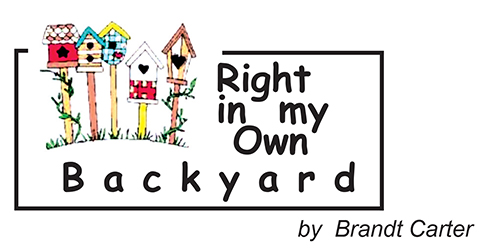
|
Broad Ripple Random Ripplings

The news from Broad Ripple
Brought to you by The Broad Ripple Gazette
(Delivering the news since 2004, every two weeks)

|
| Brought to you by: |

|

|

|

|

|

|
Converted from paper version of the Broad Ripple Gazette (v10n03)
Right in my Own Backyard - Unraveling Love's Symbol ♥ - by Brandt Carter
posted: Feb. 08, 2013

Unraveling Love's Symbol ♥
One of the first shapes I ever drew was a heart. Scribing a curve and then trying to match the other side proved challenging, but once I learned to fold red construction paper, draw one half, and cut around that line to open a perfectly symmetrical heart, I was unstoppable at making Valentines. As I grew up, each year's heart designs became elaborate with fancier decorations. Small wonder this season of hearts has always been a favorite. Once again I will be among the millions presenting loved ones with heart-shaped cards, candy, and trinkets. ♥
This year has me wondering how the heart shape came to be the symbol of affection and love. ♥
The answer just might have to do with a North African plant. During the seventh century B.C., an ancient city had a lucrative trade in a rare, now-extinct plant known as silphium. It was so important to the city's economy that the plant's image was minted on coins. These plants looked like the heart shape we know today.
From still another perspective, the Catholic Church traces the modern heart shape to the 17th century when Saint Margaret Mary Alacoque had a vision of it surrounded by thorns. This symbol became known as the Sacred Heart of Jesus and was associated with love and devotion; it began appearing often in stained-glass windows and other church icons. While the Sacred Heart may have popularized the shape, most scholars agree it existed much earlier than the 1600s. ♥
Less romantic ideas about the origin of the heart's shape persist as well. Some claim the modern heart shape simply came from botched attempts to draw an actual human heart, the organ that the ancients, including Aristotle, believed contained all human passions. The medieval tradition of courtly love reinforced the shape's association with romance. Still, hearts can be found in many non-romantic applications as well, such as one of the suits on playing cards and in tapestries and paintings. Hearts proliferated when the exchange of Valentines gained popularity in 17th-century England. At first the notes were simple, but Victorians made the tradition more elaborate, employing the heart shape in combination with ribbons and bows. ♥
Bonus Explainer: Why do we single out February 14 to celebrate romance? It's said to be the day St. Valentine, a third century Roman priest, was executed. Legends about Valentine vary. Some say he was killed for illegally marrying Roman soldiers; others claim it was for helping Christians escape punishment at the hands of a pagan emperor. Just before his death, it's believed that he sent an affectionate note to the beautiful daughter of his jailer-the very first Valentine. ♥
Perhaps all this background will find you feeling more enlightened as well as delighted by receiving a Valentine this year. Once again, I'll be ever so appreciative of all those hand-cut or drawn hearts, particularly if they come from children who are connecting to centuries of tradition in expressing love. ♥
Brandt Carter, artist, herbalist, and naturalist, owns Backyard Birds at 2374 E. 54th Street. Visit her web site www.feedbackyardbirds.com. Email your bird questions to Brandt@BroadRippleGazette.com
brandt@broadripplegazette.com

|

|

|
| Brought to you by: |

|

|

|
| Brought to you by: |

|

|

|
| Brought to you by: |

|

|

|
| Brought to you by: |


